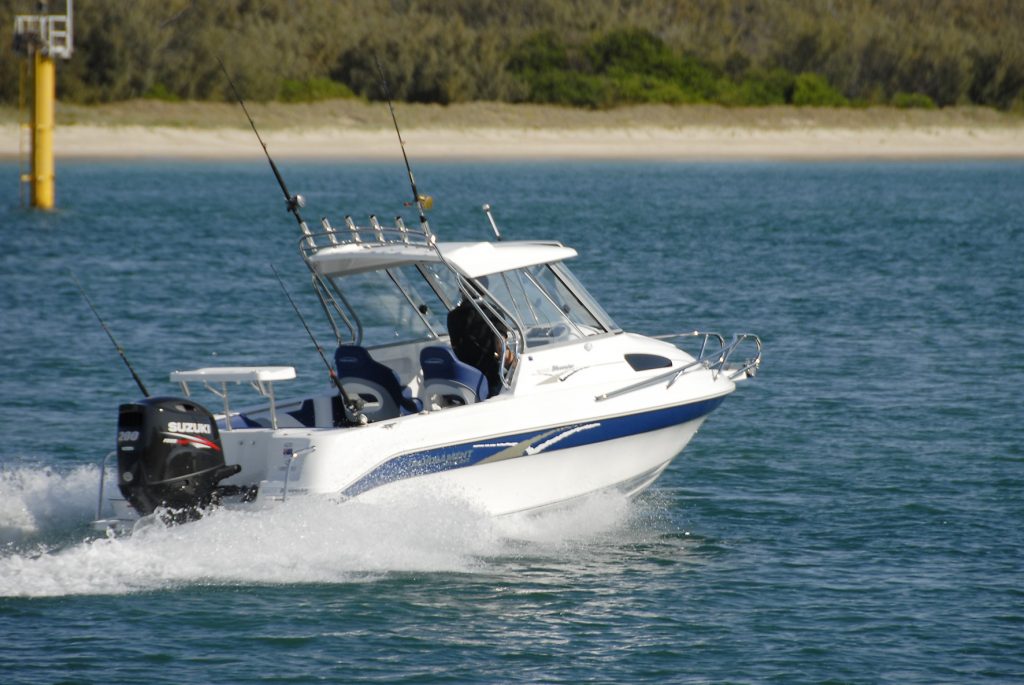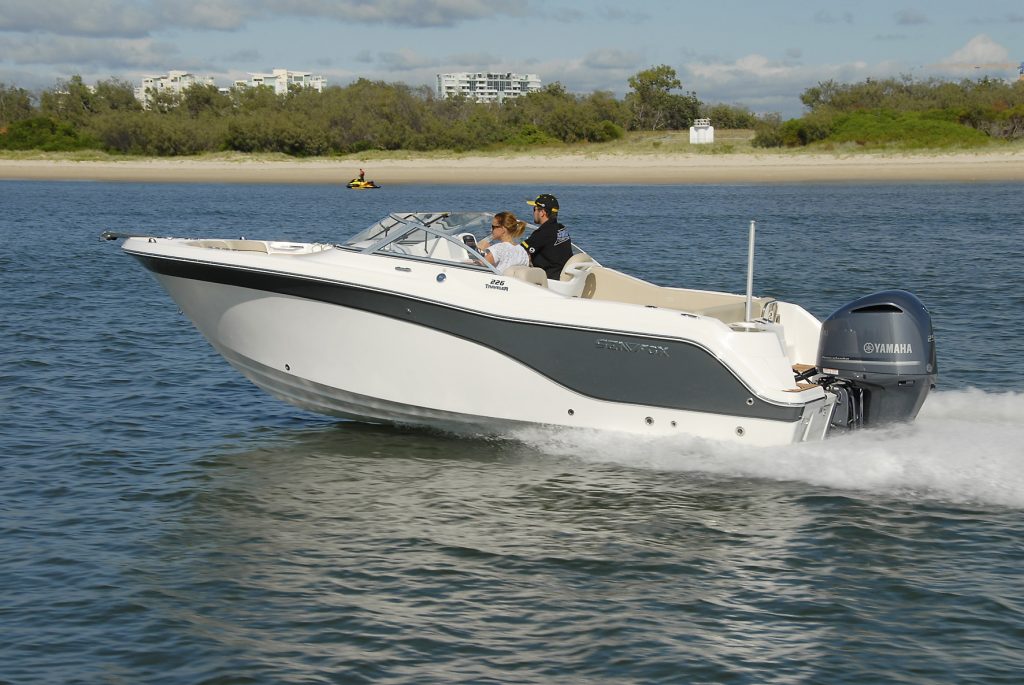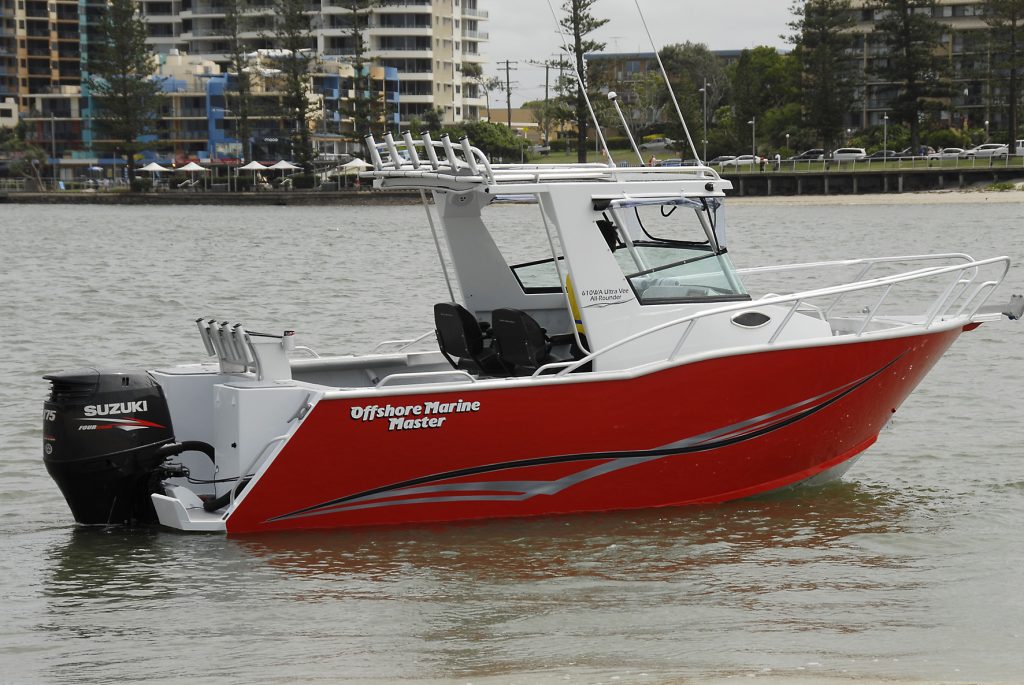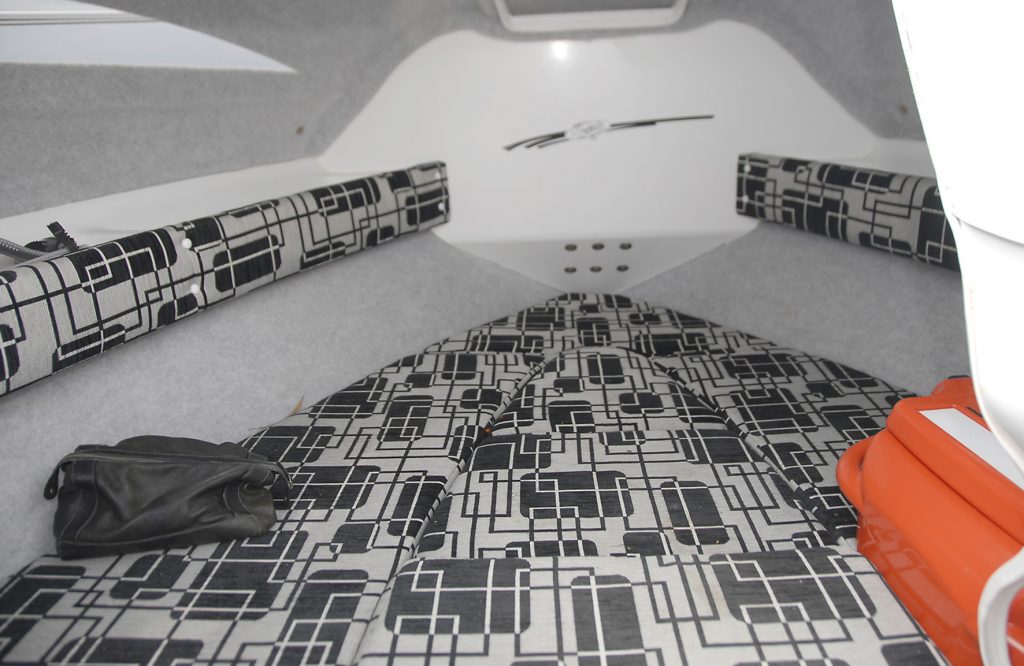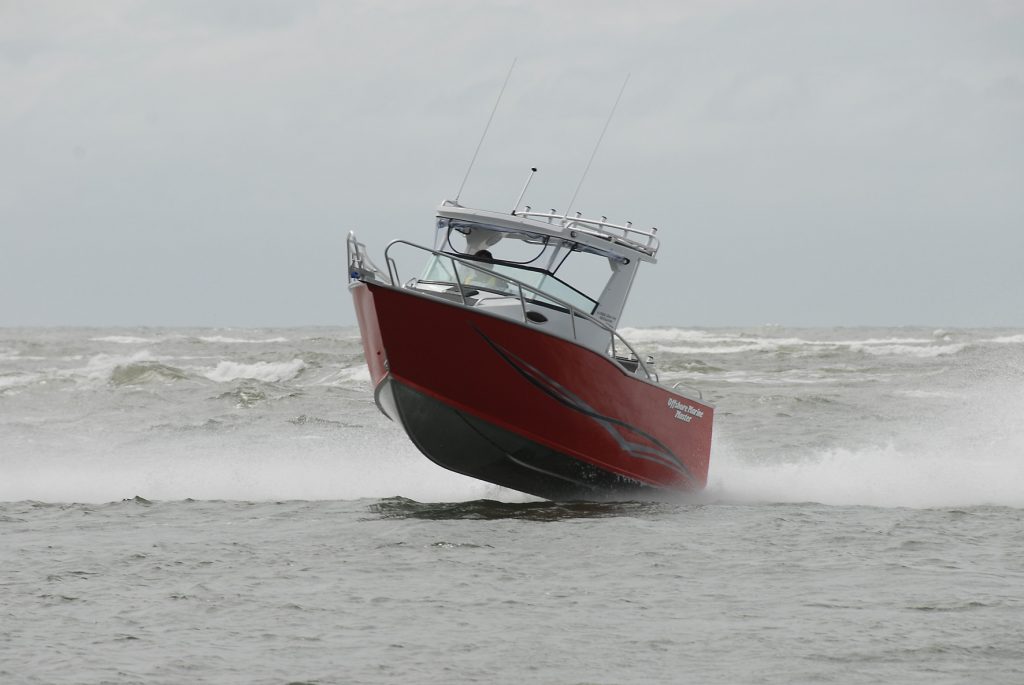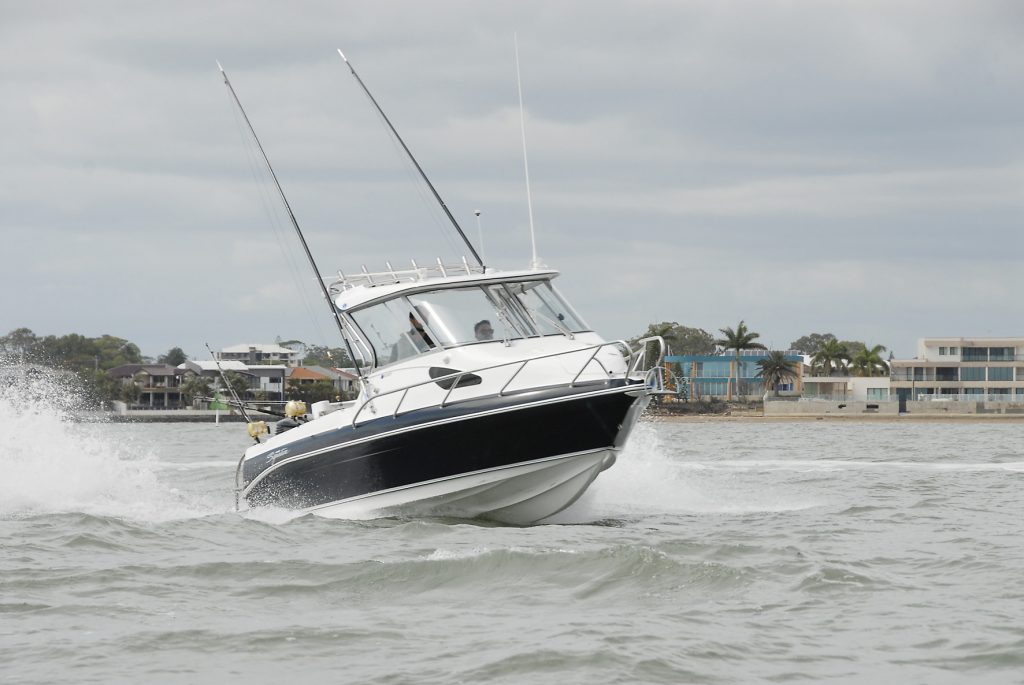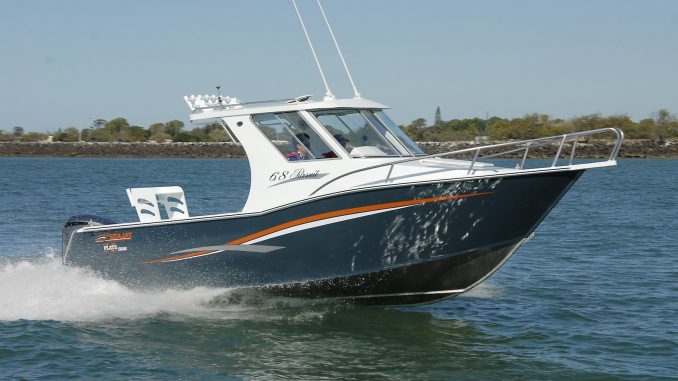
by Wayne Kampe •
If you’re keen to head offshore for a crack at the big stuff, you’ll want a dedicated an offshore rig with very specific features for work out on the ocean. Let’s look at what factors to consider when choosing the right boat for you.
Tow and Stow
Safe towing is vital and it’s important to have a favourable margin between the weight of the chosen craft and the tow capacity of a vehicle. While it’s pretty easy to tow anything, stopping becomes the issue. Car manufacturers provide tow capacities, and boaters should always consider full fuel loads, topped up eskies, and everything else carried in the boat on the day to ensure those specs are not exceeded.
The next move is to give some thought to where the boat will be kept. Boats don’t do well if left out in the weather for prolonged periods, so undercover storage for an item involving a significant capital outlay is important and a fold down T top, bimini or other over head frame work is a blessing if overhead storage room is going to be tight.
Tow and stow are minor considerations, but can have a big impact on the degree a boat is used from my experience. If transportation away from or a return to home is awkward or difficult, the boat won’t get much use.
Basic Offshore Requirements
There’s a vast difference between a craft that’s suited to offshore fishing to one that is best used in the bay or estuary. Estuary or bay craft slot into the smaller side of the ledger and do not require the amount of freeboard of an offshore craft and tend to be mainly open boats. A large centre console can satisfy both estuary and offshore work, but with entirely open boats there can be issues with rain or bad seas. The only option is to break out the wet gear and grin and bear it.
By and large the most favoured offshore rigs are larger boats because they can combine freeboard, interior space and cockpit work area in harmony.
Accordingly, to see these features melded seamlessly off shore rigs are at least 5m in length, and while most are either centre cab or cuddy cab styles of craft I’ve reviewed a couple of really large bow riders that easily doubled as offshore fishing craft. Larger boats of all styles can readily double as a bay or estuary craft suited to family boating due to the combination of comfort levels, protection from the elements and the capability to readily store expensive tackle when on prolonged runs out to sea.
Centre Cab or Cuddy?
Centre cabs are a step up from the standard centre console rig as they offer a mini cab amidships. They also offer walkaround areas from front to rear and when the craft is a larger one there can be quite reasonable storage within the centre cab. Some even feature a toilet!
But when it comes to overall protection from the elements, it’s near impossible to beat a cuddy cab craft. Size is everything in these craft and it’s no surprise that few manufacturers offer models under 5m, and many offer craft right up to 7m for the dedicated offshore anglers among us.
There’s a trade off in overall fishing room due to the cabin’s intrusion, but the comfort and protection offered by that cabin plus the bimini usually associated with it is a huge bonus.
Desirable Features for Offshore Work
Moreover, the cabin will feature bunks where you can enjoy a sheltered rest or sleep, make use of the storage under them and that of overhead shelving if it’s provided. Again, a toilet may be an option as well and this combination of features is what makes a cuddy cabin style of craft so favoured by off shore anglers.
The dash area should be large enough for anticipated navigation aids and sounders with all instruments and gauges easily read. Forward and side visibility should be unobstructed from the helm seat.
Within the cockpit work area, a live bait tank, an aft seat that can be folded down when fishing to compliment the seats for skipper and mate, a deck wash and maybe in floor storage for ice and drinks or the day’s catch will also be desirable features.
Most manufacturers offer all or at least some of these features in their cuddy cab models and with the certain knowledge that a lot of these rigs will be used offshore, they ensure that cockpit and transom heights (the overall freeboard as it’s called) are sufficient to inspire confidence in an owner. The higher those sides, within reason, the less chance of water or spray intrusion.
The Ride is Everything
As mentioned, cuddy cab craft are usually on the larger side, which in turn – whether the craft is a plate alloy or fibre glass rig – equates to some serious mass. On the water, mass is not a bad thing at all as it softens the ride, adds stability both at rest and underway and gives a great feeling of solidarity in that the boat is travelling in rather than just on the water. What’s more, today’s boat owners also have the benefit of many years of competitive hull development and current hull styles in both alloy and glass ensure that ride quality is everything it should be.
That’s not to say that the boat owner can just head straight into metre and a half swells with the throttle lever down and the tacho showing 5000rpm! After the first couple of impacts that throttle lever will come back very quickly!
The key is to drive the boat sensibly according to conditions with faster travel in calmer sea conditions, less pace equating to a more comfy ride when things are rough.
Sufficient power for the job is vital, which is why many manufacturers are recommending top engine power for their larger craft. When a wave is coming astern there are times when a rapid engine response provides peace of mind and this is never more important than when a bar crossing is being undertaken.
Conclusion
When selecting a suitable boat for offshore work it’s pretty obvious that some hard and fast rules are involved and over riding all is the dollar factor.
Larger craft do involve more expense but the enjoyment when offshore fishing on a great day is hard to beat. My advice is to shop around, looking for as many features as possible in a rig from a well-established manufacturer and make sure the chosen boat fits as many of your requirements as possible.

